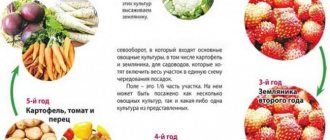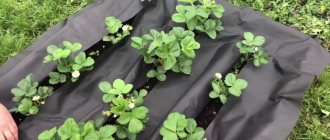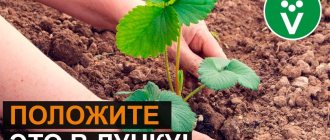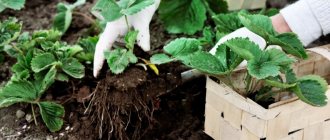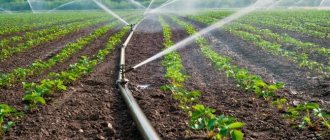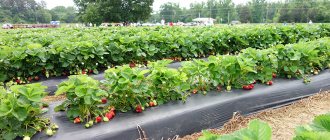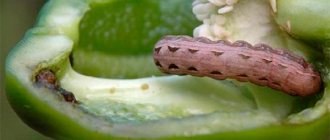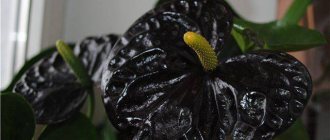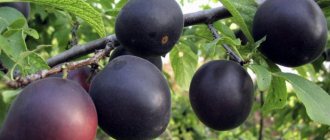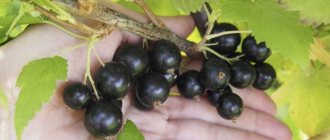The passion of many gardeners for modern methods of industrial production of vegetables and berries in their summer cottages often leads to the search for non-standard methods for growing garden crops. One of these techniques, adapted for small areas, is spunbond for strawberries. Actually, the technology itself has been used for a long time, since the early 70s, but then mainly available materials of that period were used - roofing felt or polyethylene film. Today, spunbond is a new generation material with truly progressive qualities.
What is spunbond and why is it better than other materials?
Among the covering materials used in the production of berries, black spunbond for strawberries has found its application relatively recently. Actually, the technology for producing the material, which is based on polypropylene fiber, began in the early 70s, and found active use in agriculture in the late 80s.
The basis of the material is multilayer polypropylene fibers. At the initial stage, they intertwine and form two layers of fibers laid perpendicular to each other. The second stage of heat treatment fuses the fibers into a solid fabric, and the resulting film has a unique structure - it allows air and water to pass through, but at the same time allows it to retain moisture.
For the needs of agricultural production, several types of spunbond are produced, differing in their density - from 17 to 60 grams per meter2, and in the size of the solid fabric, from 1 meter to 10 and even 20 meters wide. As for the length, you can choose a canvas of either short length or put one piece on a bed up to 4 km long.
What spunbond for strawberries looks like
The question of which spunbond is preferable for covering plants depends on the climate zone - for the southern regions, material with a density of 17 grams per meter2 is sufficient. For the northern ones, you can choose a two-layer one with one side black and the other white, and the density can be 80 or even 120 grams per meter2.
What covering material is best for strawberries?
Mulch can be organic or artificial. Natural covering materials include pine needles, straw, dry leaves and tree branches, and tops. Natural mulch effectively protects roots from heat and prevents weed growth, but decomposes quickly. This leads to the appearance of bacteria and fungi. Inorganic materials are white and black. The first type is used to protect beds and plants before winter cold.
For strawberries, different types of black covering material are used:
- Agrofibre . Suitable for growing any plant crops. Agrofibre allows moisture and air to pass through well and prevents pests from multiplying. The canvas strongly blocks sunlight, so it is not recommended for use in northern regions.
- Agrospan . The material allows water and air to pass through well and creates diffused light. Agrospan contains UV stabilizers that prevent its destruction under the influence of the sun. The disadvantage of the canvas is its high cost.
- Spunbel . Non-woven fabric is produced by extruding polypropylene threads. Spunbel is lightweight, moisture-permeable, but easily damaged.
- Spunbond . The fabric is obtained from molten polymer fibers. Spunbond reliably protects plants from temperature changes and wind. Like agrofibre, it strongly absorbs sunlight.
- Lutrasil . It repels moisture, but is destroyed by exposure to the sun.
Plastic film cannot be used for mulching. This polymer does not allow air to pass through and creates a greenhouse effect. The strawberry root system under such material will begin to rot. In the south, lightweight fabrics are more suitable for mulching, while in the northern regions, very dense ones are more suitable.
Pros and cons of planting under spunbond
You should consider how to properly plant strawberries under spunbond in several planes. The first thing you need to pay attention to is the versatility of using this material:
- Method of use as a covering material directly on the ground;
- Use as a greenhouse canvas;
- Laying it on the ground as a mulching material.
Strawberries on a personal plot are an early ripening berry, so to obtain a large harvest it is necessary to provide comfortable development conditions. First of all, it must be protected from frost. Spunbond, even of the lowest density, when covering beds in a normal manner, can provide protection for plants when the temperature drops sharply to -2 degrees.
The correct selection of material allows you to create comfortable conditions in a spunbond greenhouse for the active growing season of strawberries in April-May. Such a greenhouse protects against drafts and makes it possible to retain moisture in the soil.
When used as a mulching material, you can easily get proper beds in which the berries do not need to be cleared from the soil. In such beds there is no need for additional weeding, since weeds simply do not grow through dense material. But most importantly, the garden strawberry bushes themselves feel better than in an ordinary garden bed - the roots of the plants do not dry out and are reliably protected from the scorching sun.
As for the disadvantages of the material, it is its relative fragility. Only 2-3 seasons for most types of fabric. However, it is worth noting that the correct selection of spunbond parameters will extend its service life to 4-5 years. But at the same time it is necessary to monitor its condition and prevent mechanical damage to the canvas.
Criteria for choosing agrofibre
Spunbond is selected depending on the tasks for which it will be used. For growing strawberry seedlings, we recommend material with a density of 17 to 60 grams per meter2. To protect perennial plantings in the spring, a density of 25-40 grams is sufficient. For mulching, it is better to choose multi-layer, black spunbond.
Another criterion is the size of the canvas. When mulching, the flap must be laid so that it is not stretched like a string. The required size of a bed or greenhouse should not be taken one by one; it is better to have a small margin of up to 5% of the area, such a margin makes it possible to ensure the integrity of the material.
Spunbond is selected depending on the tasks for which it will be used
The choice for mulching should be a black material of medium density; this will allow the soil to warm up better on the one hand, and on the other hand it will prevent the root system from becoming waterlogged. When used as a covering material, it is better to take white lightweight material with a density of up to 40 grams. This is an almost universal parameter, both for shelter and for building a greenhouse.
Stages and rules for planting strawberries under spunbond
The technology for planting strawberries under spunbond will be more understandable if you imagine that the fabric is used as a covering for a greenhouse, but unlike a classic greenhouse, the air space under the fiber is minimal. In addition, the coating has two layers - the first is directly on the ground, through which the strawberry leaves emerge, the second, which will cover the planting, simply covers the foliage.
The second point that needs to be understood is that spunbond is only a tool for improving plant growth conditions. It does not affect the fertility of the soil and its quality; without proper preparation, no matter what material is used, there will not be a large harvest.
Preparing the site for planting
Before planting a strawberry plantation, the planting site is prepared in the fall - the ground is dug up, cleared of weed roots and fertilized. As the weather warms up, you need to do the following:
- Cultivate the area;
- Level the sowing area, and make a groove 15-20 cm deep around the perimeter to fix the edges of the canvas with soil;
- Add the necessary mineral fertilizers to the soil; the composition and volume depend on the quality of the soil (such an analysis should be done separately);
- For planting, you should use material with markings - this will make planting easier;
- The fiber is spread over the entire area so that it covers the entire soil, and there is at least 20-25 cm of margin around the perimeter of the groove;
- At the marking points, perpendicular cuts of 10x10 cm are made;
- Using a scoop, depressions are made, the soil selected from the hole is placed in a bucket;
- A liquid solution of fermented manure 0.5 kg and 20 liters of water is added to the holes under the bushes, 0.5-1 liters in each hole;
- The edges of the spunbond that covers the bed are sprinkled with earth.
Strawberry planting scheme
It is considered optimal to plant strawberries in rows with an interval between bushes of 25-30 cm. A distance of up to 40 cm is selected between the rows. To establish a promising plantation or breed a new variety, you can suggest increasing the distance to 60 cm in a row and up to 80 in row spacing. During the period of throwing out the tendrils, to obtain new bushes, cuts are simply made in the canvas between the rows and thus new rows of plants are formed.
Planting strawberries
When using drip irrigation, the distance between the rows is selected depending on the distance between the connection points of the irrigation lines. This distance may be less, but not less than 15 cm between rows.
Planting strawberries under covering material
For planting, plants sprouted in peat cups or young bushes with a developed root system are used. A glass or bush is carefully lowered into the holes and trampled down with soil. For filling, soil previously removed from the holes is used. The bushes should be 1-2 cm below the general surface level.
After planting, watering is done - at least 1-1.5 liters of water for each bush; after watering, the corners of the fabric in the cuts are carefully placed under the leaves.
To achieve intensive growth, a drip irrigation tape is supplied to each bush.
It is recommended to place additional weights between the rows so that the wind does not lift the canvas and damage the plants.
After this, on one side of the bed, retreating 20-25 cm from the groove, with the edge of the spunbond pressed against the soil, another groove is made up to 20 cm deep. This is necessary to fix the top layer of agrofibre with which the plantation will be covered.
How to process strawberries on black spunbond in the spring, after wintering
As soon as the snow melts and it gets a little warmer, I will inspect my strawberries. If some bushes did not survive the winter, I replace them either with purchased seedlings or wait for my own to grow back. I carefully trim off all dry, broken or diseased leaves. You can preventively spray the bushes with simple pharmaceutical antiseptics - a weak pink solution of potassium permanganate with the addition of 15 drops of iodine per bucket of water.
I feed it with mullein infusion or bird droppings. That's all spring worries about strawberries. And then, if it’s dry, I water it in the same way as the rest of the garden. I rejoice at the abundant flowering and wait for the harvest.
There is another problem - how to get ahead of the birds with the collection of ripe berries
